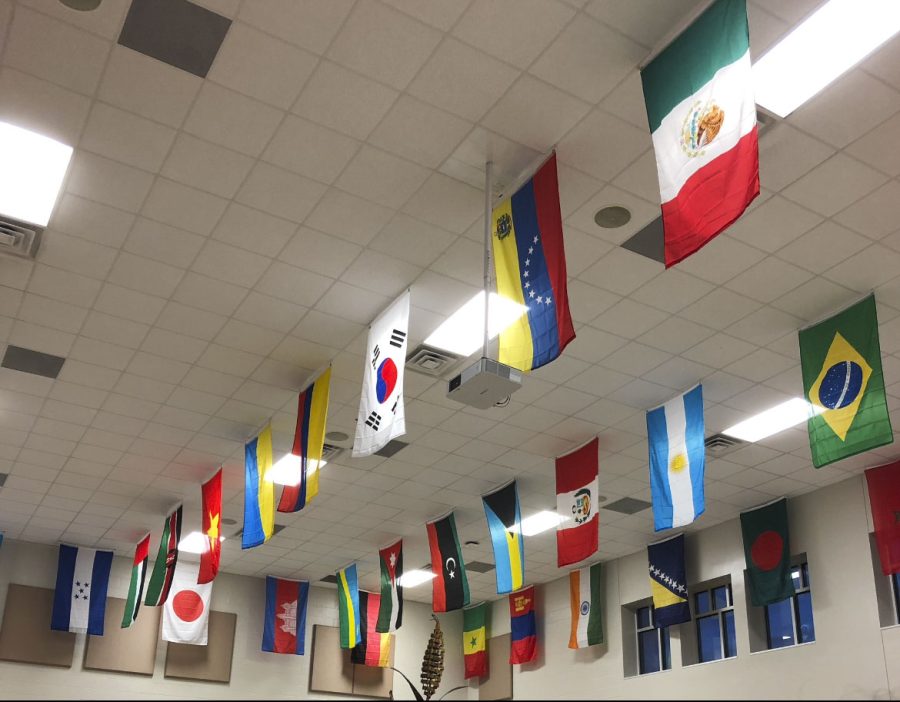Double-edged sword
Photo by Ravneet Kaur
At Promise Road Elementary, flags belonging to different nations hang from the cafeteria ceiling. They symbolize the different nations that students can trace their roots to.
February 17, 2023
The number is 21.6 percent. According to the U.S Census Bureau, out of every five people in this country, one person is not a native English speaker. In a society where language is essential, whether it be through understanding directions in hospitals and schools, or even in everyday situations—from understanding slang, pop culture references, and even abbreviations—bilingual speakers encounter a range of difficulties.
For starters, students who didn’t grow up speaking English usually have either immigrated from a different nation or have immediate family who came to America from a different country. Therefore, in addition to learning a new language, their family is probably learning English as well. That can take its toll. It’s not uncommon for bilingual students to read and translate documents, set up appointments, or perform tasks like making important phone calls to assist their parents—all simple things that native speakers may take for granted. From a young age, bilingual students take on responsibilities that their peers may not be accustomed to.
When bilingual speakers start attending schools, they are often put into English As a Second Language (ESL) programs at schools. These are designed to help students adapt to an English-speaking environment. According to the U.S. Department of Education, these programs were originally implemented in the 1950s to help decrease the number of immigrant students who dropped out of school. At first, the purpose of those programs was to focus strictly on improving academic performance. Although there was pushback, these policies did not take into consideration how they could negatively affect bilingual students or fail to assimilate them into society in a way that helped them feel proud of their heritage. Change came in 2002, with the passage of the No Child Left Behind Act, which also affected the organization and funds of the country’s ESL programs. The act allowed schools to start increasing support for ESL programs—either through expansion or other fundamental changes.
The data seems to indicate that many schools around the nation are working on changing ESL programs to better accommodate students. However, they still fail to fully address one of the biggest concerns expressed by bilingual speakers: How can ESL programs produce language assimilation in a way that allows students to feel proud of their native culture as well?
Because language and culture are so interlinked, when bilingual students are put into ESL classes and focus primarily on English, many have said that they are subconsciously getting a message that English is somehow on a higher pedestal than their native language, and by association, that their native cultures are somehow not as “acceptable.” ESL classes should avoid this kind of environment. Instead, the mission of these classes should be to encourage a sense of pride and respect towards students’ native languages and cultures, along with proper proficiency in English. Students should never feel ashamed that they don’t understand English. On the contrary, they should be made to feel courageous that they are mastering or have mastered different languages.





